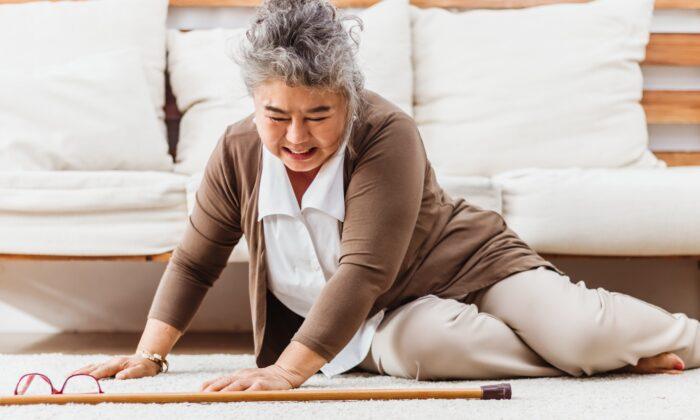Older adults are at much higher risk of death from COVID-19 than their younger counterparts, but many also face another, less-recognized health risk associated with the pandemic: loss of muscle mass. This loss is one of the primary reasons for falls—the No. 1 cause of accidental death in those 65 and older.
Also known as sarcopenia—from the Greek “sarco,” meaning flesh, and “penia” referring to deficiency or poverty—loss of muscle mass and strength is common among elders, but starts as early as our 30s. Poor diet is a risk factor for sarcopenia; so is physical inactivity. Now, with gyms closed and community centers on lockdown, many older people are arguably more sedentary than ever.
I lead a team of scientists who study the role of physical activity and diet on sarcopenia at the Jean Mayer USDA Human Nutrition Research Center on Aging at Tufts University. Every day, I am struck by how this condition affects patients. Not only can sarcopenia lead to falls; it can also lead to social isolation resulting from the falls, which can have a cascade of negative health consequences on older people. This is yet another example of the devastation caused by the pandemic.
Of Muscles and Men, and Women
Sarcopenia isn’t unique to the time of COVID-19, however. As people age, they will lose muscle mass and strength as part of the natural aging process. When people lose muscle mass, it’s replaced by fat and fibrous tissue, resulting in muscles looking like marbled steak. The rate of decline varies, with inactive seniors losing more than others. Researchers estimate that, generally, those between ages 60 and 70 have lost 12 percent of their muscle mass, with those over 80 having lost 30 percent.This loss isn’t just about sagging skin and flabby arms. Loss of muscle mass leads to varying degrees of inability to perform daily activities, such as walking. That can begin a cascade of effects, including slower movement and loss of balance, which also restrict a person’s ability to live fully. In addition, sarcopenia is associated with inflammation, insulin resistance, a drop in testosterone and estrogen levels, and chronic diseases, such as Type 2 diabetes, heart disease, and pulmonary disease.
The Role of Exercise and Diet
There are no FDA-approved medications to treat sarcopenia, but candidate therapies are in the pipeline. In the meantime, a wealth of evidence highlights the positive benefits of physical activity and proper nutrition to prevent and treat sarcopenia. All types of exercise offer benefits, but resistance or strength training works best.One study of older adults showed walking and low-intensity strength training reduced the risk of major mobility disability when compared with a health education control group over the course of two years. Previously sedentary people—those reporting fewer than 20 minutes of physical activity per week—saw the greatest benefits. By adding at least 48 minutes of physical activity to their weekly routine, they experienced the biggest reduction in disability risk.
Other observational studies suggest diet can also influence age-associated declines in muscle mass and strength. Protein intake may play a role. In one study, older adults taking in the least amount of protein had inflammation scores twice as high as participants who consumed the most protein.
Another study found higher protein intake (92.2 grams a day) was associated with a 30 percent lower risk of increasing weakness compared with people taking in only 64.4 grams daily. But further research is needed to clearly establish the role of protein intake and other nutrients in sarcopenia.
As damaging as the effects of sarcopenia can be, there still is no universally agreed-upon clinical test for it. However, imaging techniques exist to measure muscle mass, along with tools to assess strength and physical functioning. Measures of muscle strength are closely associated with usual walking speed and the time it takes to rise from a chair.
Another issue is that despite all the studies, many clinicians remain unaware of this syndrome. Maybe one of the best ways to combat this condition is to educate them about sarcopenia—and just as critically, provide them with practical guidelines about appropriate physical activity and proper nutrition for their patients. Seniors, and their loved ones, deserve to know the risks.
is a lab director and senior scientist at Tufts University in Massachusetts. This article was first published on The Conversation.


